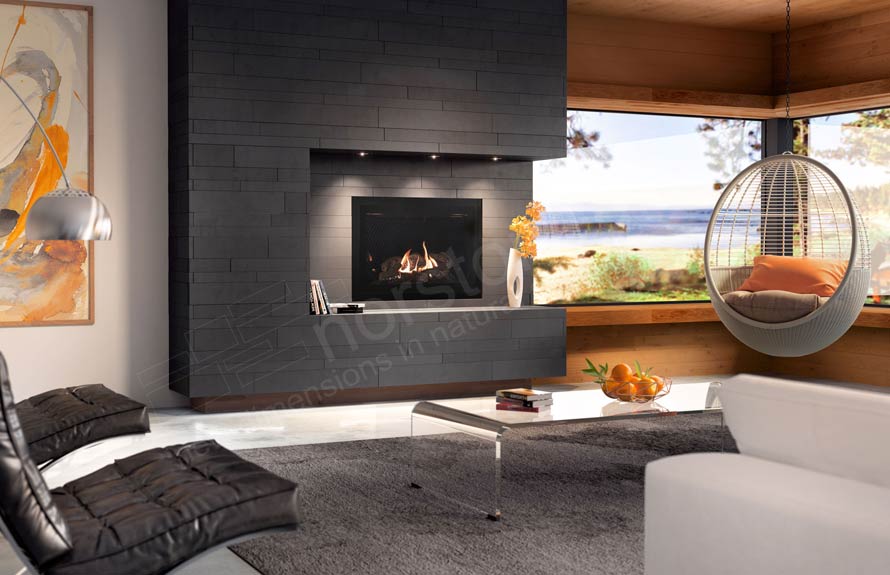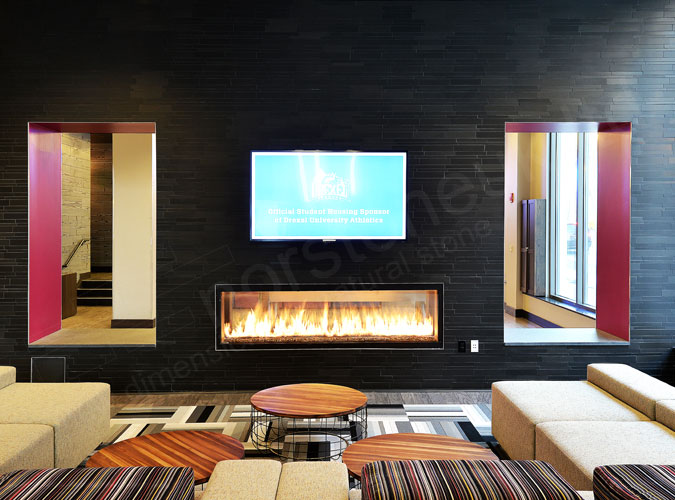So, what is EBONY BASALT made from?
Basalt is often referred to as being ‘out of this world’, and that’s actually a very accurate description – because scientists have discovered Basalt can be found on the Moon and Mars. Much of the Moon's surface is underlain by basaltic lava flows and flood basalts. These areas of the Moon are known as "lunar maria." Olympus Mons is a shield volcano on Mars. It, like most other volcanic features on Mars, was formed from basaltic lava flows. It is the highest mountain on Mars and is the largest known volcano in our solar system.
Basalt is also related to Gabbro, known commercially as ‘Black Granite’. The key difference between the two rock types is their grain size. Basalt is the fine-grained equivalent of gabbro. It is fine grained because the magma cools very rapidly when it flows out onto the surface. This is because Basalts are extrusive (magma erupted to the surface) igneous rocks that cool quickly and have fine-grained crystals. Gabbros are intrusive (magma crystallises below the surface) igneous rocks that cool slowly and have coarse-grained crystals. Gabbros often tend to contain greenish mineral elements whereas Basalt is more neutral (darks, blacks, greys) which is another reason we at Norstone prefer the finish and style of basalt.
What are the Natural Qualities of EBONY BASALT?
Basalt commonly features a very fine-grained or glassy matrix interspersed with visible mineral grains. It is a hard material but is very workable and ultimately hard wearing when used in posed applications such as veneer or cladding. Our ebony basalt is sourced from basaltic lava formed eons ago, this basalt is darker, denser and finer grained than many other stones including granite or marble.
Basalt is used for a wide variety of purposes. It is commonly crushed for use as an aggregate in construction projects. Crushed basalt is used for road base, concrete aggregate, asphalt pavement aggregate, railroad ballast and many other ‘industrial’ applications. Basalt is also cut into dimension stone such as cobble stones. Thin slabs of basalt are cut and sometimes polished for use as floor tiles, building veneer and even monuments. Basalt has always been used historically, it can be seen for example on paving stones in the city streets of Rome, Italy.
What makes EBONY BASALT such a good choice for Norstone stone cladding?
8 reasons EBONY BASALT is ideal for stone cladding projects:
- Precision machine-cut basalt tiles are millimetre exact for precise layouts
- Tiles are modular and can be installed by a tiler.
- Cuts accurately to avoid waste and damage.
- Ends are L shaped for perfect interlocking tile - no grout required.
- Profiles range between 12/16mm - perfect for those spaces that require thinness but also want to achieve a solid stone cladding look
- Lighter than traditional Rock Panel Range -. approx. 40 kg per m2
- Qualifies for Warranties/guarantees to be installed onto Knauf using laticrete MVIS Adhesive.
- Aksent™ Range has both internal and external ‘stepped’ interlocking corners for ultimate ease of installation
In summary…
If you are curious about basalt as a cladding material, you should really consider ordering a sample so you can see and feel the finish and colours firsthand – you cannot fail to be impressed by basalt!
For more inspiration, check out our project galleries to see some fantastic examples of ebony basalt stone cladding design projects.
Sources / credits: Wikipedia / Geology.com / open.edu / https://www.flickr.com/photos/lucasartoni/14351679721/








 RSS Feed
RSS Feed

